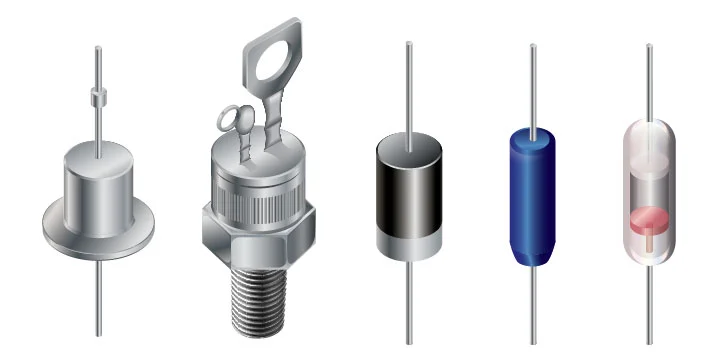Diodes: the least difficult kind of semiconductor gadgets. Since diodes are semiconductors, before we examine about diodes, we should realize what semiconductors are. In wide terms, a semiconductor is grouped between being a transmitter and a non-channel of power as it does power better compared to non-conveyors however worse than conduits of power. Most semiconductors are formed by having pollutants; which are molecules of one more material added to them. This interaction is alluded to as doping. Extra iotas in doped materials change the equilibrium by either adding free electrons or making openings where the electrons can go. These modifications can make the material more conductive. Semiconductors that are adjusted to have additional electrons are called N-type material. Semiconductors that have additional openings where the electrons can go are alluded to as P-type material as it has extra decidedly charged particles.
 A diode is made out of both, an N-type material which is clung to a segment of P-type material and has terminals which are known as anode and cathode at each end. This plan conducts power just in one course and would not permit any stream the other way. In the event that no voltage is being applied to the diode, the electrons from the N-type material would move over and fill the openings in the P-type material. Subsequently shaping a consumption zone in which the semiconductor is gotten back to a state where it goes about as a protector as every one of the openings are loaded up with no free electrons which keeps charge from streaming. Presently since the photodiode array detector is going about as an encasing, how would you inspire it to lead power? This can be accomplished on the off chance that you can get electrons to move from the N-type region to the P-type region and the openings the other way. To do this, you interface the N-type region of a diode to the adverse terminal of a battery and the P-type region to the positive end.
A diode is made out of both, an N-type material which is clung to a segment of P-type material and has terminals which are known as anode and cathode at each end. This plan conducts power just in one course and would not permit any stream the other way. In the event that no voltage is being applied to the diode, the electrons from the N-type material would move over and fill the openings in the P-type material. Subsequently shaping a consumption zone in which the semiconductor is gotten back to a state where it goes about as a protector as every one of the openings are loaded up with no free electrons which keeps charge from streaming. Presently since the photodiode array detector is going about as an encasing, how would you inspire it to lead power? This can be accomplished on the off chance that you can get electrons to move from the N-type region to the P-type region and the openings the other way. To do this, you interface the N-type region of a diode to the adverse terminal of a battery and the P-type region to the positive end.
The adverse end would repulse the free electrons while the positive finish of the battery would draw in them. The equivalent would occur for the openings in the P-type region. In the event that the voltage contrast between the terminals is sufficiently high, it would push the electrons and the openings out of their area and inspire them to uninhibitedly move. This would take out the consumption zone and with the electrons moving unreservedly and having the option to lead charge. If you somehow happened to attempt to interface the P-type region to the adverse terminal of a battery and the N-type region to the positive terminal of the battery, it would expand the exhaustion zone as the openings and electrons would be drawn to the contrary energies. The utilization of diodes is to forestall any undesirable charge streaming off course because of inappropriate association. They can shield your gadgets from getting harmed.

